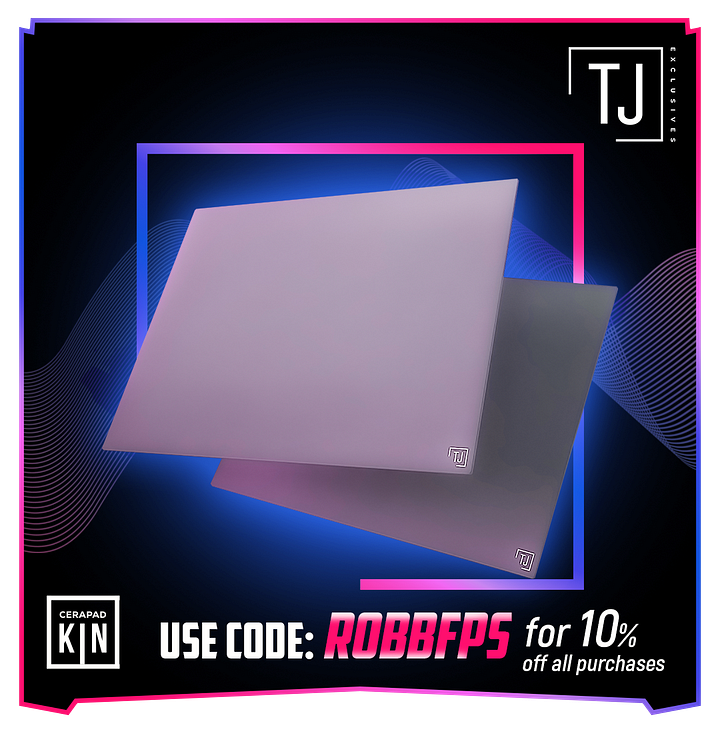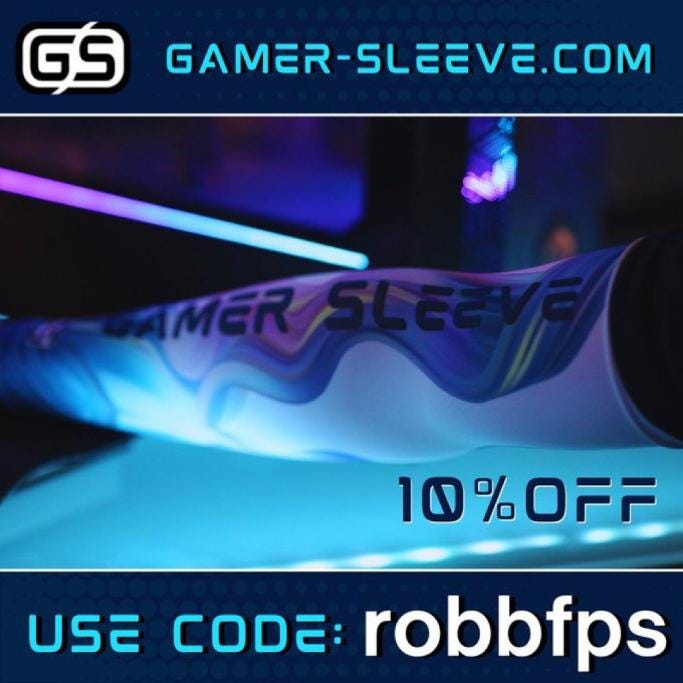What is Aim?
Explore the fascinating world of motor skill development as we delve into the intricacies of aiming in video games.
In this educational blog post, we'll examine the cognitive and motor aspects that contribute to skill acquisition and reveal how progressive difficulty can lead to impressive improvements. Whether you're a casual player or an aspiring professional, understanding the science behind aiming can enhance your gameplay experience and elevate your performance. Join us as we unlock the secrets to mastering this essential gaming skill.
So, What is Aim?
Aiming is a motor skill. Motor skills involve the coordination of muscles and movements to perform a specific task. When using a mouse to aim in a video game, you are required to make precise and controlled movements to achieve the desired in-game result. This coordination of hand-eye movements and the ability to manipulate the mouse accurately and quickly is an example of a fine motor skill. Fine motor skills are those that require small muscle movements and control, as opposed to gross motor skills, which involve larger muscle groups and movements. So, this begs the question “Is understanding the technique for aiming maneuvers a motor skill itself, or is the motor skill only related to moving the mouse accurately, while learning the correct method for different situations is about executing the skill properly?”
To answer this question, we need to understand how skill acquisition works. To put it simply, motor skill acquisition is sort of split up into three stages:
Cognitive Stage
This is the initial stage where you learn the basic concepts, techniques, and mechanics of the skill. In the case of aiming in video games, this would involve understanding the optimal way to move your hand based on situations in-game. We could relate this to learning Static Technique; the execution and understanding of how the motor skill performed is the first step. Learning that flicking fast followed by a smooth micro is a “learning gap” we have to cross to improve.
Associative stage:
In this stage, you begin to practice the skill and make adjustments based on feedback and experience. You refine your technique and gradually improve your performance. This stage may involve adjusting your aiming technique to account for factors like in-game physics, weapon types, or enemy movements. This would also refer to the actual performance of technique in a trainer, or even in-game. This is what we would also call “error based feedback.” This can be enhanced by VOD reviewing btw to you lazy noobs.
Autonomous stage:
This is the final stage where the skill becomes automatic and requires little conscious thought. You can execute the skill efficiently and effectively even in complex situations. In the context of aiming, this could mean consistently hitting your targets with minimal effort, even under high-pressure gaming scenarios. This would really refer to performing the balance of training in trainer and performing the same technique in-game. This might confuse some of you, because there is a lot of misconceptions. Some people think that aiming is “different” in game than in a trainer, but this is false. If you aim differently in-game, it is because you are not properly executing the technique in-game. Otherwise, what would the point of a trainer even be?
So, to sum this portion up, learning proper aiming technique requires a cognitive grasp and understanding of technique to be able to perform and refine in trainer or game. Learn technique > Practice technique > Learn from mistakes > Profit. Let’s answer some floating questions, like
Does muscle memory really exist?
The short answer, yes. The long answer, it’s a bit complicated. Muscle memory plays a significant role in aiming, particularly as you progress through the skill acquisition stages and your movements become more automatic. Muscle memory refers to the ability of your muscles to "remember" specific movements and execute them with greater ease and accuracy over time, thanks to repeated practice. So, to relate this to the game, it would be more a representation of the bridge between your brains understanding and your bodies execution of the movement.
Wait! Will sensitivity break my muscle memory?
No! Remember. The execution of aim technique is partially cognitive. Yes, you will take some time to adjust to a new sensitivity setting, as your brain and muscles need to recalibrate to the new input-output relationship. However, this doesn't mean your muscle memory is permanently broken. With practice and adaptation, you can regain your proficiency in aiming. This is all because we understand the actual technique execution. This also means that just “training at a higher sensitivity” doesn’t automatically make you better on lower sensitivity. You need to pursue the technique with intent focus and practice it. Playing static on 20cm where you still don’t understand how to actually flick and micro will not make you better on 40, 60, or any cm/360 if the gap is in your actual understanding of the technique.
Are harder tasks better?
Many creators, coaches, and everyday people have fallen victim to the pitfall of the “85% accuracy” learning curve without actually understanding it, so let’s address the origin and how it actually works. The idea of maintaining an 85% accuracy rate for optimal motor skill learning comes from the concept of the "challenge point framework." This theory suggests that learning is most effective when the difficulty of a task is appropriately challenging for the learner's current skill level. If a task is too easy, there is little opportunity for learning, and if it's too difficult, the learner can become overwhelmed and frustrated. However! We need to remember and call back to the most important part of this. No tasks difficulty will help you pass the cognitive stage if you simply do not understand how to execute the proper technique. There is no point in spamming Hell Track or LDDH because it’s the hardest tracking scenario you can think of. Why is this? Tasks that are too hard for the people playing it can generate bad habits.
In the context of aiming in video games, individuals may resort to improper techniques or shortcuts in an attempt to compensate for the difficulty. These maladaptive strategies can lead to the development of incorrect muscle memory and hinder the learning process. Attempting to tackle a highly challenging task before mastering the fundamentals can result in poor aiming habits, such as erratic mouse movements, an inconsistent grip, or overcompensation in response to in-game scenarios. These habits can negatively impact aiming accuracy and overall performance. To better learn and develop proper habits, it is better to follow a progressive difficulty method.
Progressive Difficulty? What’s that?
I couldn’t be more glad you asked. This is more for the coaches than players themselves (but you’re more than welcome to teach yourself, that’s why I write these). Progressive difficulty is a learning approach that works by gradually increasing the level of challenge in a task or activity as a person's skill level improves. The method aims to maintain an optimal balance between the learner's skill and the difficulty of the task, promoting engagement, motivation, and effective learning. To follow the framework of progressive difficulty, you’d want to balance a level of challenge and skill. This would refer to the way you as an individual approach that 85% learning curve1. It is not flat for everyone, or nobody would need a coach in the first place. This is part of what coaches are for. Maintaining an appropriate level of difficulty helps learners stay engaged, motivated, and focused on improvement.
Start small, but build up. You need to build a foundation to work off of, start with simpler tasks, let’s say like 1w2ts, and master the fundamentals of static technique. Learning flick and micro, learning to prioritize under-flicking rather than over-flicking, learning to decelerate the landing of your flick so you can transition from flick to micro smoother, and then up the target count to where you add complexity to the situation. The flicks are more often, sometimes they are clustered where you need to have a variable pace, and other challenges begin to present themselves. Progressive difficulty requires gradual increase in task difficulty and mastery of the fundamental skills at hand2. Lastly, you need to monitor your progress. This means you need to keep track of your scores, but also you need to watch them. You need to watch your good and bad runs, you need a mental note to be able to visualize what a good run for you looks like, and you need to watch other people to be able to visualize what an even better run looks like. To end this, the best way you can accelerate your growth is to have a consistent practice and review schedule. Always reflect on runs and keep mental notes to re-watch for later.
"My goal isn't to become the best player, but to become the best version of myself."
- Lee "Faker" Sang-hyeok
FINALE
I hope you enjoyed this substack post and you learned something, if you want to contribute to me here are some ways:
Check out my coaching on Fiverr!
Or check out my affiliate codes:


Admittedly, there is no evidence to show what we can consider to be the actual 85% accuracy curve in a trainer, you can dissect it to the actual components that make up a technique, such as static technique, you could take it as the overall accuracy in a scenario, but we cannot do anything besides form an educated guess on what it would represent in this context currently.
Task difficulty can be represented by many things, including target size, target speed, pattern changes and the frequency of them/amount of patterns, and many other variables that can change.



